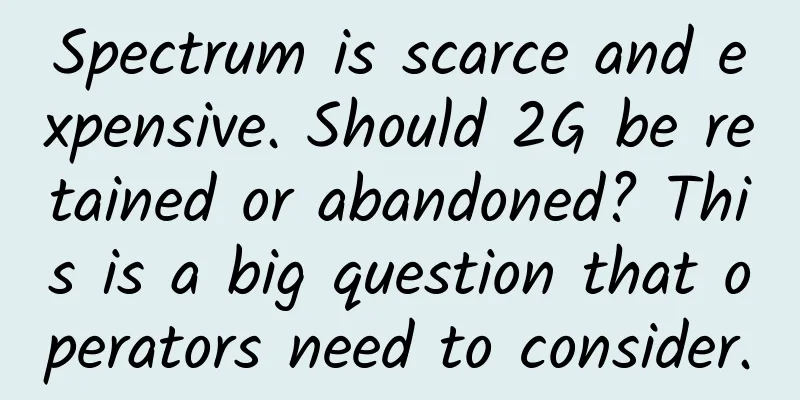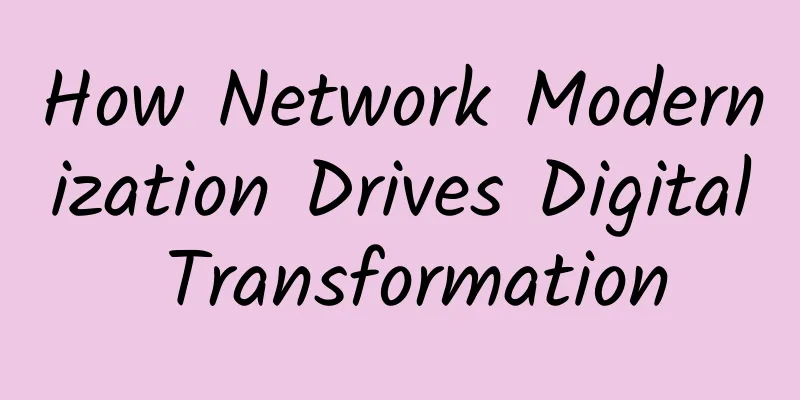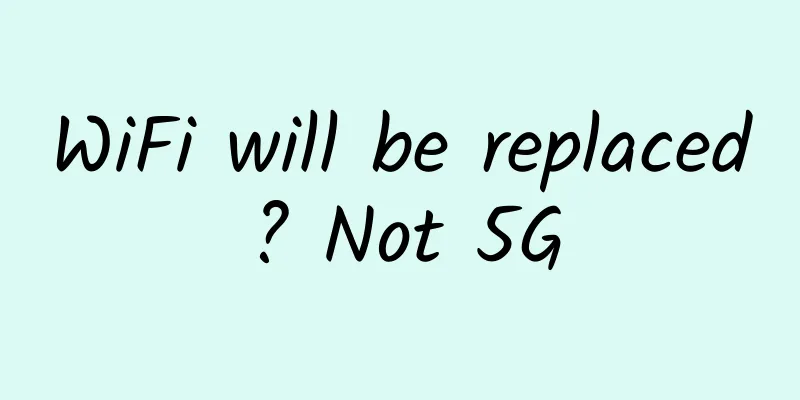Spectrum is scarce and expensive. Should 2G be retained or abandoned? This is a big question that operators need to consider.

|
According to foreign media reports, in just a few years of 5G deployment, the question of how mobile operators can have enough bandwidth to support future network launches has become an important issue discussed at every high-level meeting of the international telecommunications industry. Consider the forecasts: Research firm Gartner estimates that there will be 6.4 billion connected “things” by the end of 2016. The research firm predicts that number will rise to 20.8 billion by 2020. Many vendors, including Ericsson and Cisco, are predicting twice as many as Gartner’s. All of these devices need to be connected, most of which are mobile devices, but spectrum is a limited and expensive resource. That's why operators are looking for ways to free up their existing spectrum. AT&T has already shut down its 2G network to free up spectrum, and Verizon and T-Mobile will follow suit. At this year's Mobile World Congress, Neville Ray, CTO of T-Mobile US, talked about how the company is not only shutting down its 2G network, but also its 3G network.
“As we move to 5G, I don’t want to have 2G or 3G networks left behind,” Ray said. “LTE is not dead. It’s the foundation for us to deploy new technologies.” Legacy infrastructure faces challenges. Ray acknowledged that there are problems, most importantly those related to traditional voice technology and mobile phones. In order for T-Mobile to shut down its legacy infrastructure, it will need all customers to switch to voice over LTE (VoLTE) or voice over IP (VoIP) services. This means some customers will need to upgrade their phones. “There’s a big problem with older phones,” Ray said. “We all know the replacement cycle for phones in the U.S. We already have 2 million customers using VoLTE — which we think is a lot — but we need to do more to fully migrate to LTE.” How to handle voice data isn’t the only challenge facing the switch off of 2G and 3G networks. There are also major issues with legacy machine-to-machine services using 2G SIMs. While new IoT standards for low-power and wide-area networks may eventually replace 2G M2M connections, there’s still the question of the actual physical upgrade. Telefónica Chief Technology Officer Enrique Blanco said in an interview with GTB that he did have a plan to shut down the 2G network, but it was unlikely to be implemented within the next five years. The reason, he explained, was that a number of minor issues had to be resolved first - most notably reducing the complexity of the Spanish telecom operator's 2G network. “The 2G network has to be shut down,” Blanco said. “But there is one small problem that needs to be solved. First, there are the machine-to-machine users. We could shut it down tomorrow, but we have many customers who need to upgrade. We have to ensure that within the next two years we can reduce the complexity of 2G and minimize spectrum usage. In order to reallocate the spectrum, we need to minimize the number of customers using it. We can shut down the 2G network within the next five years.” He did propose a solution, however, but it would require countries to develop roaming agreements for 2G. That would allow rival operators to keep a small amount of 2G bandwidth to support small networks and use other networks when necessary. On the 3G side, Blanco said it would take longer to shut down, perhaps a decade from now. This is because even if Telefónica is able to migrate all its customers to VoLTE services, it will still need to provide support for 3G. This shows that there are differences between different markets and the strategies of major telecom operators are also different. But now, it looks like it will take some time before 2G networks are completely shut down worldwide. As for 3G, Ray's current plans may be too optimistic. |
<<: 4G is already fast enough, why do we need 5G?
>>: What makes 5G's peak speed reach 20Gb/s? An article to understand millimeter wave
Recommend
Mellanox Launches Innovative ConnectX-6 Dx Chip, BlueField-2 Secure Cloud SmartNIC and I/O Processing Unit Solutions
Beijing, China – September 3, 2019 – Mellanox Tec...
2018 Huawei Global Financial Summit held in Beijing Future digital banking will be a fully connected platform
[51CTO.com original article] On April 25, Huawei ...
Huawei releases the OptiXstar Gigabit Smart Optical Modem flagship product, opening up the Wi-Fi 6 home arena!
[51CTO.com original article] On March 30, Huawei ...
Riverbed Digital Experience Management
Today, most businesses realize that in order to a...
The future is here. How can operators accelerate innovation in blockchain applications?
At present, there are more than 1,400 blockchain ...
RAKsmart: US servers start from $20/month for the first month, Japan/Korea servers start from $59/month, cluster servers start from $109/month
RAKsmart is carrying out the "New Year's...
spinservers: $99/month - 2*E5-2630Lv3, 256GB memory, 2*1.6TB SSD, 30TB/10Gbps bandwidth, Dallas data center
spinservers recently released several promotional...
2019 China Urban Renewal Promotion Award: The gains and changes of World Union Space
As China's major cities gradually enter the e...
spinservers Spring Festival promotion: 100M-10Gbps unlimited traffic servers starting from $119, San Jose data center
To celebrate the traditional Chinese New Year, sp...
4G is still growing, and 5G is still a long way off
Recently, the Ministry of Industry and Informatio...
80% of the country's fiber optic access 100M broadband can't open web pages
According to data released by the Ministry of Ind...
Summary information: Cloudie.sh/Hongsuyun/Mondoze/Retslav/Crunchbits/Niuniu IDC
On weekend nights, I share with you some of the h...
Why is your router's ability to penetrate walls poor?
1. Is it my fault that the signal is weak? Whethe...
Microsoft launches Viva: an employee experience platform based on Teams
[[391893]] Microsoft today unveiled Viva, its emp...
Finally someone explained traffic operation clearly
[[428404]] This article is reprinted from the WeC...









